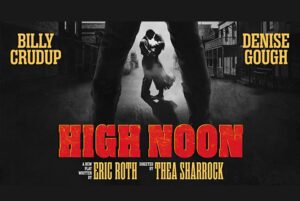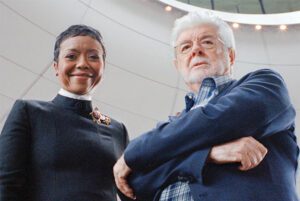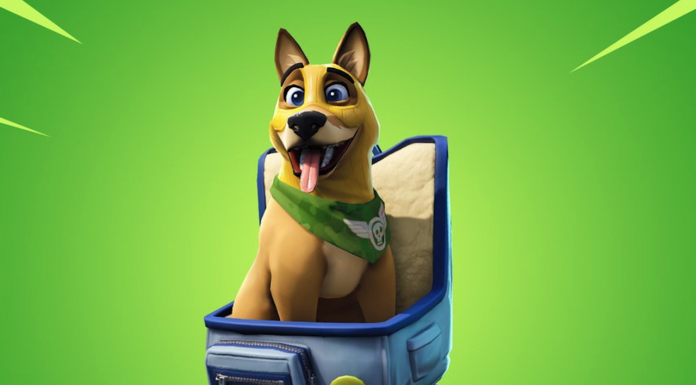
It’s been quite the first year for Apex Legends, Respawn’s battle royale game. Over its first year, Apex Legends saw numerous changes and in-game adjustments–ranging from the addition of new characters and weapons to the implementation of daily/weekly challenges and limited-time events. Now, the battle royale game is going into its second year with Season 4: Assimilation, which adds new character Revenant, the Sentinel sniper rifle, map changes, a battle pass, and several other in-game adjustments.
With the start of Year 2, Respawn wants to tackle Apex Legends a little differently. Whereas Season 1: Wild Frontier, Season 2: Battle Charge, and Season 3: Meltdown were all designed to establish Apex Legends’ identity, Assimilation kicks off a year where Respawn wants to be more innovative–both in terms of what Apex Legends can offer its community as well as what the gaming industry can expect from a battle royale game. Respawn doesn’t want to abandon its style of episodic storytelling, though.
Year 2: A Year To Innovate
“If you’re getting a theme here for our second year, it really centers around innovation,” Respawn COO Dusty Welch said in an interview with GameSpot. “You think about the first year of launching something, a new IP successfully, and a team that had not engaged in live service before. And so there’s a lot of muscle memory you have to build up and you’ve got to find your stride, and you’ve got to protect the team and the team health along the way. You’ve got to find that sweet spot.”
Respawn excels at storytelling and building strong characters, something the team has managed to implement to some extent in all of its existing games. Even the original Titanfall, with its weak campaign, at least introduced characters that fans fell in love with–most notably Blisk, who’s gone on to be one of the most recognizable characters in the Titanfall/Apex Legends universe.
“There are games in the [battle royale genre] that [are] multiplayer-only,” Welch said. “We want to bring something new. And we think that storytelling–finding a reason for people to really care and latch on to the game on a meaningful and personal level, have that emotional connection to a character–is so much deeper, so much better than not having it. [Players] get invested in that story and the interplay, and they’re buddies with their characters as well, and how they play with each other in the game.”
Continuing To Surprise With Episodic Storytelling
This emphasis on storytelling can be most clearly felt in the final weeks of Meltdown, when Respawn was beginning to advertise what was coming in Assimilation. It pulled the rug under us and introduced a new playable character by relying on misdirection rather than an outright announcement. Initially promoting the seemingly melee-focused Forge, Respawn both adopted the persona of a news anchor to tease story developments on a day-by-day basis and also implemented in-game map changes to further sell the narrative–all of which built a fair amount of hype for the new character. Ultimately, however, Forge was killed by Revenant, the true new playable character.
Though other developers have done similar in-game, day-to-day marketing strategies for their multiplayer games (Epic managed to get its players invested in Fortnite every day for week-long periods with stunts like the giant purple cube and the black hole), it’s rarer to see a team adopt this strategy to tell a game’s story. It emulates the structure of an episodic game, where you’re given the narrative piece by piece every few days as opposed to one large chunk.
Apex Legends Season 2 – Battle Charge Launch Trailer
Please use a html5 video capable browser to watch videos.
This video has an invalid file format.
Sorry, but you can’t access this content!
Please enter your date of birth to view this video
By clicking ‘enter’, you agree to GameSpot’s
Terms of Use and
Privacy Policy
“Not being a writer, I don’t want to speak too much for them, but, to me, [Apex Legends] is episodic,” Apex Legends game director Chad Grenier said. “We treat it mostly like that, where each season we figure out what story we want to tell that season. Who’s the new character? How do they play into the past and the present and the future?”
The major difference between Apex Legends and an episodic game, of course, is that Apex Legends is a games-as-a-service title that constantly builds on itself. So if you want to know the story of Apex Legends, you need to stay invested to see it unfold. Those who are just getting into the game right now, for example, can’t ever go back and witness the confusion of the community back in Wild Frontier when the Kings Canyon Repulsor Tower was turned on for the first time to get rid of the flyers that had begun sneaking into the arena, all of which hinted at the major map changes coming in Battle Charge. They can only read articles and old forum posts about what it was like–it can never be experienced first-hand ever again.
Apex Legends – Season 3 “Meltdown” Cinematic Launch Trailer
Please use a html5 video capable browser to watch videos.
This video has an invalid file format.
Sorry, but you can’t access this content!
Please enter your date of birth to view this video
By clicking ‘enter’, you agree to GameSpot’s
Terms of Use and
Privacy Policy
Since the beginning, Respawn has leaned into the mystique such a form of storytelling can create by dropping hints that gets fans speculating and theorizing as to what’s going to happen next. And the team is devoted to maintaining this level of mystery going forward into Assimilation and beyond, as implied when I asked about the shadow wolves/dogs that may or may not be running around the new Planet Harvester in World’s Edge and the howling/barking sounds that may or may not be faintly echoing throughout the canyon on the map–all of which may or may not be teasing the upcoming addition of Loba, a new character who may or may not have been hinted at in the Assimilation cinematic launch trailer. “I don’t think we should say anything about that,” Grenier said, laughing. “I think you guys should just keep playing and see what happens.”
“Not talking about the barking, but the storytelling and the crafting of lore was a very purposeful franchise decision from the outset of creation, and we’re super happy that it’s come together,” Welch added. “People are begging us for more and the team here loves it and are really starting to riff and run with it now. We’re just getting started.”
Apex Legends Season 4: Assimilation Launch Trailer
Please use a html5 video capable browser to watch videos.
This video has an invalid file format.
Sorry, but you can’t access this content!
Please enter your date of birth to view this video
By clicking ‘enter’, you agree to GameSpot’s
Terms of Use and
Privacy Policy
Unlike an episodic game, which usually has an established narrative arc, Apex Legends’ endpoint is allowed to fluctuate however Respawn wants. The team can use the very nature of a games-as-a-service title to both make quick adjustments to Apex Legends’ story or find new ways to tell it–going beyond animated shorts and in-game map changes, for example, and using a made-up news station to tell the story of a crime as details are uncovered.
[The storytelling] is actually pretty free-form,” Grenier said. “We have a really creative team, both on the dev side and the marketing side, and everybody is sort of involved in working on the game. So it could just start as a hallway conversation or a random idea at dinner. And just like anything in this company, people will jump on a great idea and people get really passionate and involved. So we don’t have a structured plan of how to do these things. It’s just sort of the result of a lot of really passionate and talented people being in the same room and talking about these things. We hope to not stick to a formula, necessarily. We like to surprise our fans.”
Making Limited-Time Game Modes Into Permanent Add-Ons
The team isn’t content to only experiment with new ways of storytelling either, as there are plans to continue using the limited-time modes to glean additional insight into the Apex Legends’ playerbase and see what type of new content could work. “Sometimes we do learn valuable information,” Grenier said, in regards to the limited-time modes. “We did a limited-time mode for Solos, and we saw how that impacted the game and the playerbase, who engaged with it and who didn’t, and we learned quite a bit. So you might see that coming back in the future with some tweaks. Same with Duos–we learned a lot, we brought it back.”
Apex Legends Valentine’s Day Rendevous Duos Event Starts Today!
Please use a html5 video capable browser to watch videos.
This video has an invalid file format.
Sorry, but you can’t access this content!
Please enter your date of birth to view this video
By clicking ‘enter’, you agree to GameSpot’s
Terms of Use and
Privacy Policy
“We understand that the fans of the game want these other modes to play, and we want them to have those modes as well,” he continued. “But we need to make sure that we’re introducing them in a way that is healthy for the game and doesn’t take away from all the other great parts of the game. One risk that we have to watch out for is dividing our player base, so we need to make sure that people are still able to find matches, whether it’s in Trios or Solos, or whatever the modes might be. The goal isn’t to take it away from players. The goal is to bring it back in a healthy way that both makes the fans happy and also doesn’t make the overall game experience worse. And so that’s what we’re doing now.”
Dividing the fanbase up too much is an all too familiar situation for Respawn. Despite the niche popularity of Titanfall 2, many of its multiplayer modes like Last Titan Standing and Bounty Hunt saw a massive decrease in players a year out. Nowadays, Attrition is really the only mode you can reliably find matches for. Having choices is good, but only if people are logging into all the ones being offered–otherwise, your playerbase suffers. It’s understandable that the team wants to be careful about how it implements new modes in a permanent capacity.
In the meantime, players can continue to expect to see new limited-time modes make their way into Apex Legends throughout Year 2. And Grenier says that fans can anticipate that some of them will continue to embody the wonderfully odd weirdness of the limited-time modes rotated into Apex Legends throughout Grand Soirée Arcade. “I’ll throw out something that’s just sort of peak weirdness,” he said. “Internally, we had a designer prototype a game mode that would be for a limited time, and it involves bananas–actual bunches of bananas. Now, whether they’re bananas when [the mode] is released into the game, probably not. But that is kind of what happens internally, as far as weird goes. There are lots of crazy ideas.”
Don’t change the bananas, Respawn. I want this unannounced banana mode–I want it so badly.
GameSpot may get a commission from retail offers.























